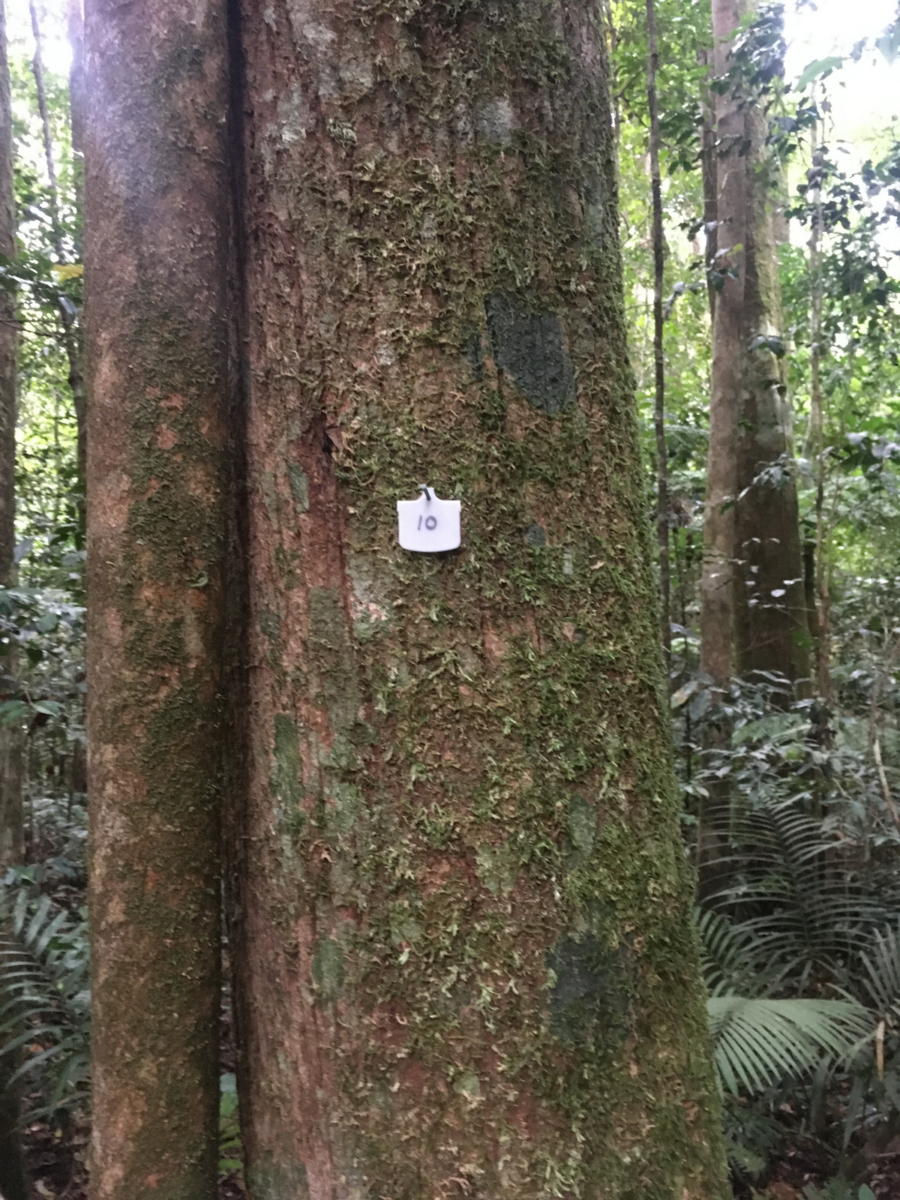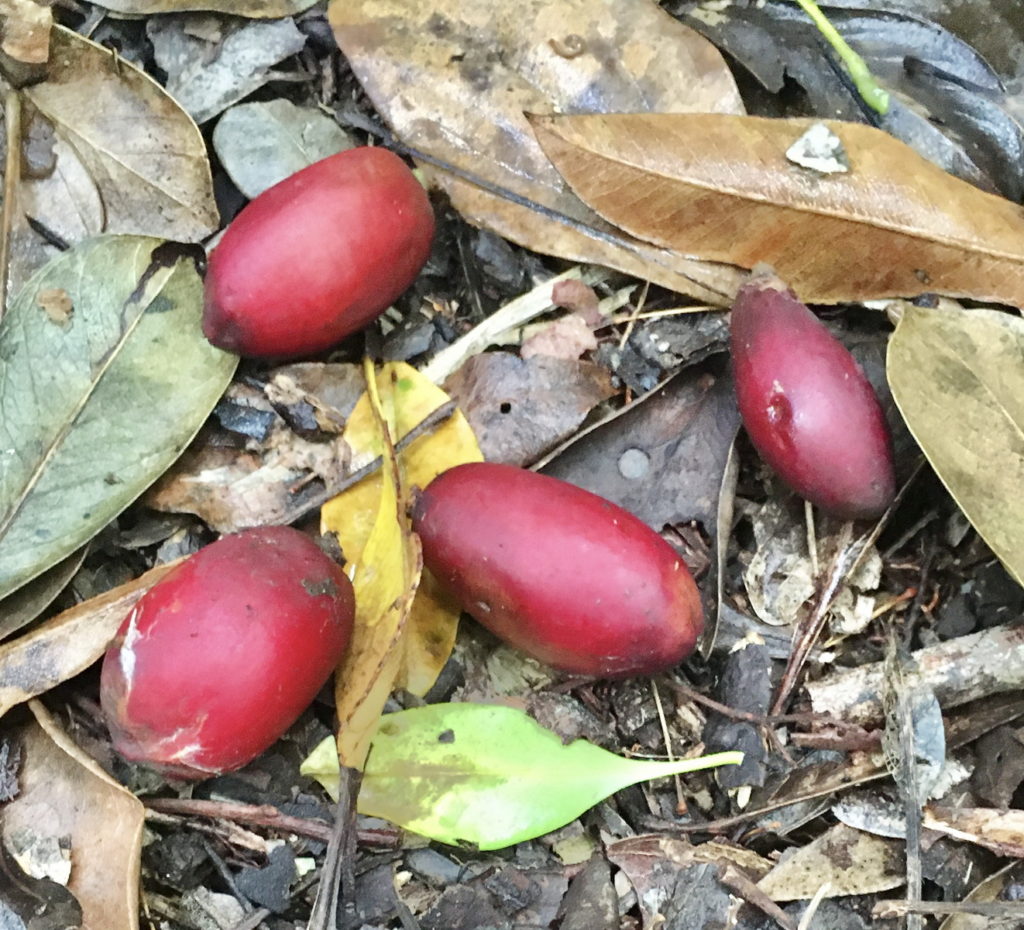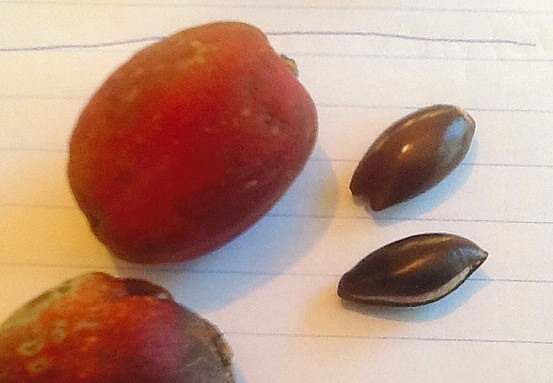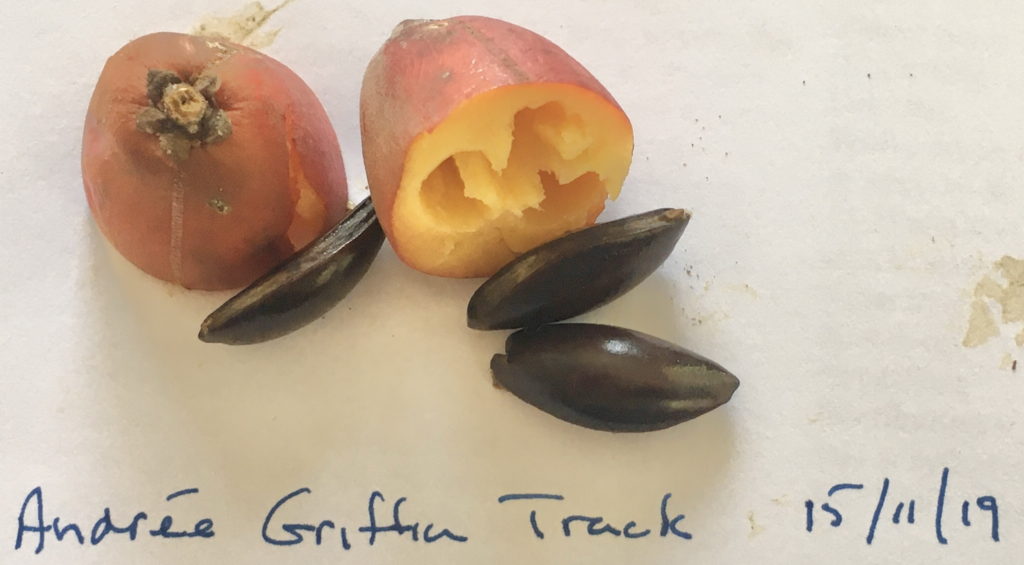The Hickory Boxwood (Planchonella euphlebia) is endemic to north Queensland. It is a widespread and relatively common tall (~25m), often buttressed tree in established rainforests from 200m to 1200m in altitude. It is also sometimes referred to as Pouteria euphlebia, although this name is now considered to be a synonym .
Leaves are obovate (egg-shaped with the narrow end towards the stem) and 5-14cm long. The undersides of young leaves are covered in fine brown hairs. the species name euphlebia refers to the well developed (“eu”) veins (“phlebius”) on the leaves.

.jpg)
Although common around Paluma, these trees are not easy to distinguish from the appearance of their trunks. There is a tagged specimen (White Tag number 10) on the H-track near the bottom of the slope leading down from Whaley Crescent. However the fallen fruit are easy to identify. The fruit appear from October to December and are fairly common on the ground along many Paluma walking tracks. They are about 1.5.2cm long. globular to elongate and coloured yellowy-orange to red. The fleshy fruit contains 1 to 5 distinctively shaped brown glossy seeds with a pale grey scar along one side. The fruit is reported to be edible in some texts but as always great caution should be taken in sampling any fruit from the forest.
Timber from this tree is suitable for general building and furniture, but it was not specifically targetted by loggers.
Text and photos (unless indicated) by Jamie Oliver



